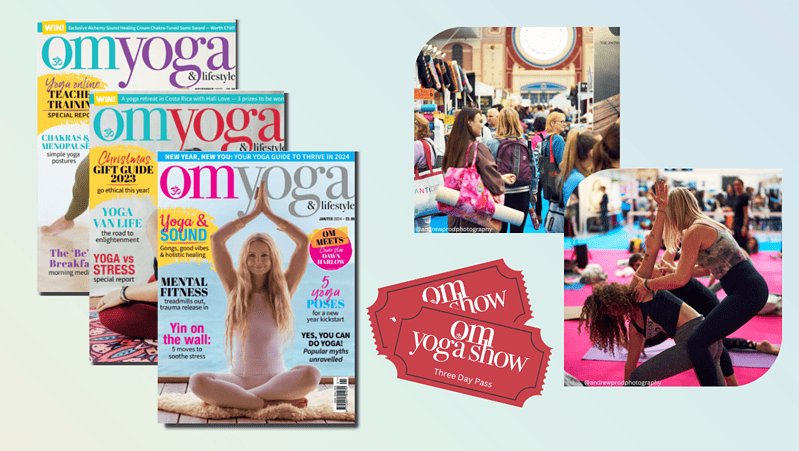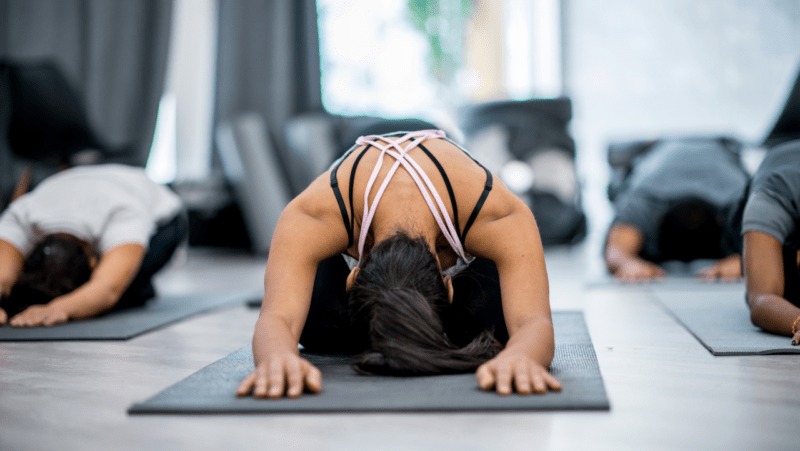
6 ways writing emails has made
me a better yoga teacher
How a weekly email has helped Sue Cheung become a better teacher
As teachers it’s our responsibility to connect with students during the class, but it’s also important for us to be present for them afterward. To help them take their yoga off the mat, and build sustained practices. The question is how? My answer: email.
With January around the corner, we’ll soon start preparing for the annual influx of students with new year's resolutions. We’ll be thinking of themes for our classes, practicing sequences and curating playlists.
These days students are spoilt for choice in terms of who, what and where they want to practice yoga. When we have the opportunity to teach, we want to teach the best class possible and build trust. To create a space where students feel like they learned something about themselves.
A friend told me that when she started teaching in the 1990s, there was a group of students who would show up every week. There was an ongoing relationship between teacher and student. Looking back at your yoga journey, it’s likely the same for many of you - at some point you started showing up every week for a specific class and teacher. That’s because we learn best via repetition and continuity.
The yoga landscape has drastically changed over the past few years and so have the ways that students want to practice. If we wish to continue sharing the valuable teachings of this ancient tradition, we need to find ways to stay connected with our students.
And yet, despite the clear benefits of making enduring connections with our students, many teachers are too embarrassed to ask students for emails because “we don’t want to look sales-y” or because “it just isn’t yogic”.
But deep down we know that only teaching public classes isn’t sustainable and can lead to burnout. Without a sense of connection, being a yoga teacher can feel a bit lonely - like you’re teaching an ever-changing carousel of students with little scope for depth and development.
I don’t regularly post on social media because of how exposing it can feel, but mostly because the dopamine hits cause havoc with my nervous system! Sending newsletters to my mailing list feels more contained and safer.
And if you’re one to believe statistics, it creates more engagement with your readers.

If you have 2,000 email subscribers, 2,000 Facebook fans and 2,000 followers on Twitter, and send out a communication, on average you will get the following response*:
- 435 people will open your email
- 120 Facebook fans will see your message
- 40 Twitter followers will see your message
(*“Email marketing vs. Social Media” - Mailmunch)
These stats speak for themselves.
I've been teaching since 2012, but it wasn’t until I started teaching yoga full-time in 2020, that I started taking Jason Crandell’s advice - to collect emails.
Since then I've been steadily building my email list, and I now write weekly newsletters to send to my subscribers. What initially started as a way to simply let my students know my classes and workshops, has helped me become a better yoga teacher.
Here are the top six ways:
-
I'm learning more about my students and their interests/hopes/desires with the practice
There’s usually a call-to-action in my emails, where I encourage people to engage with me so that it’s not one-way communication. And learning about my students helps me better serve them as a teacher.
-
I'm sharing yoga beyond asana
It's important that yoga isn't seen as just a physical practice, but to bring awareness and respect to the other limbs of the tradition.
-
I'm more attuned to how yoga shows up in my daily life
I'm writing weekly content, I'm able to hone in and be more conscious about how I use the skills of yoga day to day.
-
I'm creating more connection with my students
I've had many students reply to me and say, 'I'm so glad you shared that. I need to hear that today.'
-
I have more clarity as to who and what I want to teach
I can't serve everyone, and it's liberating knowing that I can focus effectively on a specific group of students that I resonate with.
-
It has given me confidence that what I have to share is of financial value
Not everyone will attend my workshops or retreats and that’s totally fine. I love creating value through my newsletters. But, I’m also more comfortable with promoting my offerings because I know that what I teach is worth the financial investment. Surely, it’s ok for me - for all of us - to earn a healthy income as a yoga teacher!
We’re lucky that we get to teach yoga. Even if it’s one person that shows up to class. Yes sometimes it can feel like a slog, but we know to stay on the path.
Given the current state of the wider world, we know that people really do benefit from the yoga practice, both on and off the mat. We want to share the practice with as many people as possible - and email is an excellent way to reach them.
Here’s my free resource: 5 tips for writing emails that your students will actually read. To stay connected, please visit my website: www.suecheungyoga.com. If you join my newsletter you’ll receive examples of how you can best serve your students through email.







